Loading...
Podcasts
Latest Interview
|
|
|
Recent Interviews

|
Crescendo turns up the volume on vertical power delivery
Tim Phillips, Chief Executive Officer, President and Founder, Empower Semiconductor, discusses the company’s Crescendo chipset, an artificial intelligence (AI) and high-performance computing (HPC) processor true vertical power delivery platform, available for final sampling, and now going into mass production. With a combination of 20x faster transient response, 2x lower voltage droop and positioning under or near the processor, the Crescendo chipset enables gigawatt-hours (GWh) in energy savings for a typical AI data centre. |

|
Ignite Next launches Europe’s scale-up program for deep tech startups
Markus Bohl, CEO and co-founder of Ignite Next, explains how Ignite Next has been launched as Europe’s new scale-up program for deep tech innovation, designed to bridge the gap between early-stage founders and industrial-scale success. Created by the team behind the renowned Intel Ignite program and now independently operated, Ignite Next introduces a new collaborative model - bringing together the global leading technology players, including Infineon and Intel, to support the continent’s most ambitious deep tech founders. Rather than operating as a traditional accelerator, Ignite Next positions itself as the missing link between startups and industry - a hands-on, non-dilutive program helping founders scale IP-heavy breakthrough technologies from Pre-Seed to Series B and beyond. |

|
Making waves in metrology innovation
Javier Elizalde Co-Founder and Chief Operating Officer (COO) of Wooptix, discusses the launch of the company’s Phemet® metrology system that provides ultra-fast and extremely accurate wafer shape and geometry measurements with sub-nanometer resolution. Javier explains that he Phemet® system’s ability to capture more than 16 million data points with sub-nanometer resolution with ultra speed in a single pass sets a new metrology benchmark for the industry. The system is especially useful for high-throughput in-line measurements of hybrid bonding, back-side power delivery logic architectures, and next-generation 3D NAND and HBM. |

|
A breakthrough tool for AI data centre design and optimisation
Axel Nackaerts, imec’s System Scaling lead, discusses the launch of imec.kelis, a cutting-edge analytical performance modelling tool designed to revolutionise the design and optimisation of AI data centres. As workloads scale to trillions of parameters and energy demands surge, system architects face mounting pressure to balance performance with sustainability and cost. Traditional simulation methods are often slow, opaque, or too narrow in scope. Imec.kelis addresses this gap by offering a fast, transparent, and validated modelling framework that enables informed decision-making across the full stack - from chip to data centre. It empowers teams to explore architectural trade-offs, optimise resource allocation, make informed decisions, and accelerate innovation in a field where time-to-insight is critical. |
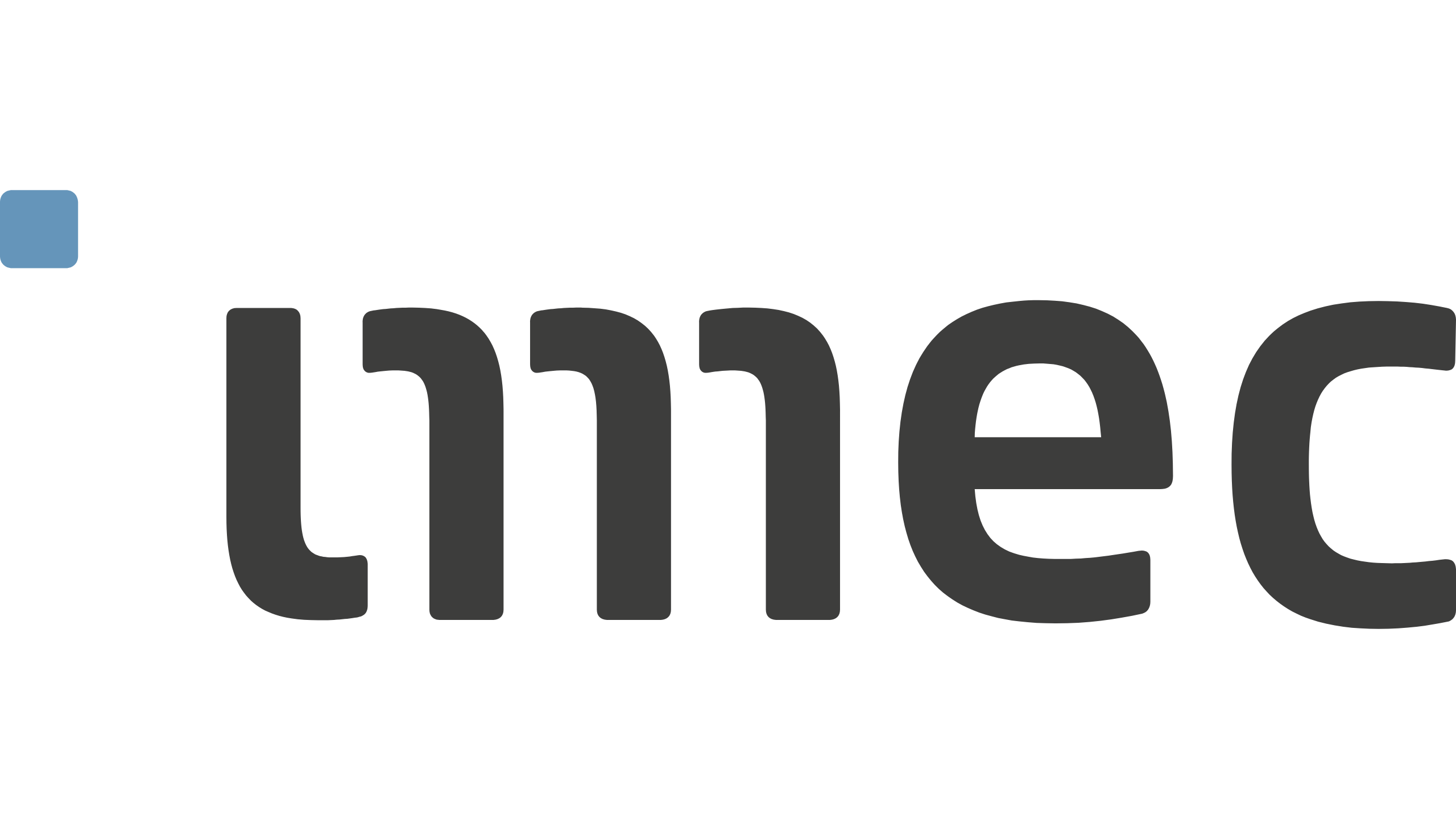
|
A winning combination achieves quantum computing success
Kristiaan De Greve, fellow and program director for quantum computing at imec, explains how imec and Diraq, a pioneer of silicon-based quantum computing, have demonstrated that industrially made silicon quantum dot qubits consistently show error rates that surpass the values needed for quantum error correction. The results, reported in Nature, show that Diraq’s qubits can be manufactured reliably with the tools of the silicon microchip trade, confirming the potential of imec’s industrial manufacturing techniques for developing large-scale silicon-based quantum computers. Diraq-designed devices were shown to consistently achieve over 99% fidelity in operations involving two quantum bits (or ‘qubits’). This feat, made possible by imec’s advanced spin qubit technology platform, is a crucial step in Diraq’s roadmap toward utility scale — the point at which a quantum computer’s value exceeds its cost. |

|
NanoIC adds advanced SRAM memory macros to its N2 pathfinding PDK
Anita Farokhnejad, DTCO Program Manager and Julien Ryckaert, VP R&D, both at imec, discuss the recent NanoIC pilot line announcement - the release of the N2 P-PDK v1.0, an important update of its N2 Pathfinding Process Design Kit (P-PDK). This new version introduces several new features, including a library of 29 SRAM memory macros, allowing designers to explore and benchmark system-on-chip (SoC) designs with frontside and backside power routing. By adding the SRAM macros in the design options, the N2 P-PDK v1.0 marks an important milestone in enabling research, learning, and design exploration on advanced and future nodes. |

|
CEA-Leti launches multilateral program to accelerate AI with MicroLED data links
Vygintas Jankus, MicroLED Partnership Manager, CEA-Leti, discusses CEA-Leti’s launch of a multilateral program on microLED technology for ultra-fast data transfer, with a particular focus on accelerating artificial intelligence (AI) growth. The lab- to-fab initiative draws on the institute’s deep expertise in microLED process technology. Vygintas explains how supercomputers demand ever-faster communication links with very high energy efficiency and ultra-low latency, but interconnect performance is lagging behind compute power. MicroLED represents a true paradigm shift for short-range optical, point-to-point data interconnects, delivering extremely high data-density transfer rates with far better energy efficiency than current technologies. |

|
AI continues to dominate the semiconductor space
David MacQueen, Service Director, Executive Programs at TechInsights, discusses the five key trends, as identified in the Outlook Report 2026, which will impact the semiconductors industry, with AI the main focus. AI inferencing is set to join the AI LLMs, while HBM, co-packaged optics and overall advanced packaging innovations will primarily be aimed at supporting the speed and density of the AI compute engines. David also identifies the transition from FinFETs to Gate All Around (GAA) transistors as well as the ongoing trade and tariff turbulence as other developments of note and has some interesting insights as to how the chip makers are responding to the challenges and opportunities of these various trends. |

|
Promex and QP Technologies to expand mil-aero strategy
Rosie Medina, Senior Vice President, Sales & Marketing, Promex Industries and Ben Mendoza, Vice President, Military Projects, at Promex Industries and its QP Technologies division, outline the companies’ strategy to expand their footprint in the defence and aerospace sectors to help meet growing demand for trusted, onshore microelectronics partners. To this end, Ben will lead efforts to strengthen the companies’ military qualification pathways, including working with the Defense Logistics Agency to establish MIL-PRF certification, extending ISO/AS9100 coverage across facilities, and ensuring ITAR compliance remains robust. His role also encompasses outreach to industry task forces, such as the JEDEC JC-13 government liaison committee, where he currently serves as chair, to align Promex and QP Technologies capabilities with evolving standards and policies. |

|
Assessing the opportunity and impact of advanced packaging innovation
Lee Chee Ping, Managing Director, Strategic Marketing, Advanced Packaging, Lam Research Corporation, provides detailed insights into advanced packaging innovations within the global semiconductor industry (and the trends driving this work), focusing on the strengths of Asia-led R&D, equipment and materials, foundry/OSAT manufacturing and ecosystem partnerships, discussing some of the core process challenges and explaining how Lam Research is helping to address them. |

|
Helping to scale next generation optical connectivity
Benoit Fleury, CPO Business Director at Corning, explains how Corning is collaborating with GlobalFoundries to develop detachable fibre connector solutions for the GF Fotonix™ silicon photonics platform. The latest solution, a glass-waveguide based edge-coupler compatible with GF Fotonix’s v-grooves, is designed to meet the growing demands of AI data centres for high bandwidth and power-efficient optical connectivity. Other coupling mechanisms are also being developed, including a vertically-coupled detachable fibre-to-PIC solution – demonstrating Corning and GlobalFoundries’ combined ability to produce multiple forms of co-packaged PIC-to-fibre connectivity. |

|
PowerLattice promises to break the AI power wall
Dr. Peng Zou, CEO and Co-Founder of PowerLattice, explains how the company, emerging from stealth with $25 million in Series A funding, is reimagining power delivery for next generation AI accelerators. The company’s breakthrough power delivery chiplet tightly couples power and compute, reducing total compute power needs by more than 50%, effectively doubling performance. By bringing power directly into the processor package, the company is delivering the performance and efficiency AI needs to keep scaling beyond today’s limits. |

|
Addressing critical advanced packaging challenges in chipmaking
Ming Li, vice president of strategic projects (dielectrics), Deposition Product Group at Lam Research, discusses the recent launch of the company’s VECTOR® TEOS 3D - a breakthrough dielectric film deposition system developed specifically for advanced packaging, as part of Lam’s broader portfolio – which is currently installed (or being installed) at leading logic and memory fabs. Ming Li highlights the innovative capabilities of the new solution: delivers thick, high-quality dielectric films void-free, high-aspect ratio performance, proprietary wafer clamping for high-bow wafers, backed by Lam’s deposition and integration expertise. |

|
The secrets behind Screen’s semiconductor success
Martin Hollfelder, VP for Service and Installation/Qualification and Technology at SCREEN SPE Germany, discusses the company’s long track record in the semiconductor industry, evolving from its Japanese roots into a global supplier of equipment for lithography coat/develop, wet cleaning/etching, thermal annealing and metrology applications. SCREEN has won a deserved reputation for both technology innovation and equipment reliability and Martin shares his excitement as to the challenges and opportunities facing the semiconductor industry into the future. |

|
How technology is shaping supply chain strategies
Marcus Jabalera, Director, Global Supply Chain Operations, DSV IMS (Inventory Management Solutions), discusses how AI-driven inventory optimisation is helping semiconductor manufacturers improve resilience and to reduce lead times, how to ‘bridge the gap’ during tariff disruptions, just-in-time v just-in-case and a range of other topics, emphasising the importance of the right combination of technology and human expertise when it comes to ensuring minimum supply chain disruption. |
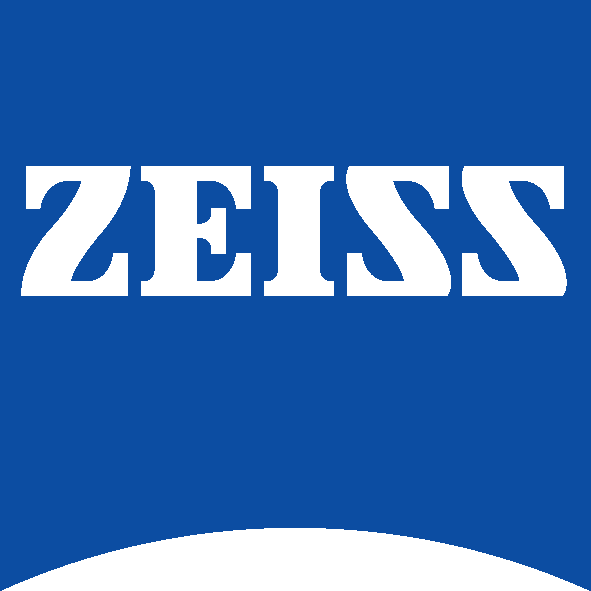
|
Advanced microscopy innovation meets the demands of AI and 3D packaging
Dr Thomas Rodgers, senior director and head of electronics marketing at ZEISS Microscopy, discusses the forthcoming International Symposium for Testing and Analysis, or ISTFA, taking place in Pasadena, California, November 16-20th. He outlines the company’s presence at the event, where the focus is on heterogeneous computing and advanced packaging – playing to ZEISS’s technical expertise and innovation strengths when it comes to advanced failure analysis solutions (both current and planned for 2026) required for this era of AI. |

|
La Luce Cristallina launches 200-mm BaTiO₃ wafer
Alex Demkov, CEO and Co-Founder, and Agham Posadas, CTO and Co-Founder, both at La Luce Cristallina, explain how the company’s crystal-on-glass BaTiO₃ substrates, support growing demand from data centres, telecommunications, sensing, computing and integrated photonics markets with the 200-mm BaTiO₃ wafer offering better speed, a smaller size and lower power consumption than silicon photonics modulators while addressing the integration challenges of alternative materials. The company haas also opened a state-of-the-art fabrication facility in Austin, TX to expand capacity for wafer-scale fabrication. |

|
Electronics visibility eliminates energy waste at the chip level, and beyond
Noam Brousard, Vice President, Solutions Engineering, proteanTecs, explains how semiconductors are straining under GenAI workloads such as model training, inference, and high-performance AI applications, and are quietly bleeding energy across data centres. proteanTecs has invented ML-driven deep data health & performance monitoring, which enables AI chipmakers to reclaim 8 - 14% in power savings without sacrificing performance, by eliminating the energy waste baked into traditional design. This also decreases the amount of water needed to cool down servers. For a data centre like meta’s Hyperion, that would mean savings of up to 700 megawatts or enough power for more than 200,000 homes. |
|
|
Liquid cooling option STR provides SLT and BI solution for HPC, AI and automotive devices
Davette Berry, sr. director of business development for Advantest, discusses the expansion of the company’s 7038 System-Level Test Platform, with right-sized single test rack solution for high volume manufacturing. The new liquid-cooling enabled system delivers affordable, high-density SLT and burn-in test for high-demand, lower-volume HPC, AI, and automotive devices. Davette also looks forward to Advantest’s presence at SEMICON West and also shares some insights as to what will be keeping the company busy over the coming months. |
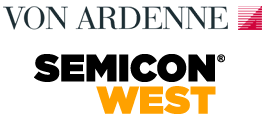
|
High-tech vacuum coating systems come to Phoenix
Brian Cohen, CEO, VON ARDENNE North America, provides an overview of the company’s vacuum coating systems and technologies being promoted at the forthcoming SEMICON West event, before sharing some fascinating insights as to how the company is developing to help its semiconductor customers with the many challenges and opportunities they encounter as the industry continues its dynamic innovation and collaboration focus. |

|
Disruptive chipset platform transforms satellite agility, efficiency and sustainability
Paolo Fioravanti, CEO, and Carl McMahon, Chief Commercial Officer, Circuits Integrated Hellas (CIH), share their expectations for the forthcoming SEMICON West event, where they are excited to be sharing details of the company’s recently launched Kythrion™ flagship Ka-band Antenna-in-Package (AiP) platform for SatCom. |

|
Celebrating semiconductor success in Phoenix
Ahead of SEMICOn West 2025, Martijn Pierik, Co-Founder and Executive Chairman, Kiterocket, shares his excitement at the event ‘s fist visit to the company’s home city (thanks in part to his lobbying!), outlining just how and why Phoenix and Arizona have become such a focus area for the semiconductor and other hi-tech industries. Martijn also highlights some of his clients’ planned activities at the show as well as sharing his his delight that a delegation from his Dutch homeland will be visiting the event and being hosted in the famous Kiterocket Lounge. |
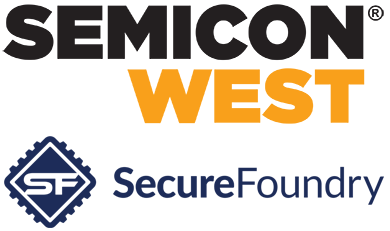
|
Successfully tackling supply chain gaps
Ahead of SEMICON West 2025, Lex Keen, CEO of SecureFoundry, teases an exciting announcement ahead of the show and also shares his thoughts on some of the increasing barriers to fabrication for both emerging technologies and legacy systems and how the company is helping its customers address this challenge, and tells us what's keeping him busy at the present time. |

|
SEMICON West reaches new heights in Phoenix
Joe Stockunas, President, SEMI Americas, provides a comprehensive overview of the forthcoming SEMICON West 2025 event, held for the first time in Phoenix, Arizona. The show floor has grown from 1100 exhibitors in 2024 to 1500 this year, and the packed conference programme boasts just under 600 presentations covering the sector’s current challenges and opportunities, including AI and quantum computing, cybersecurity, the skills shortage, sustainability, supply chain and heterogeneous integration. |
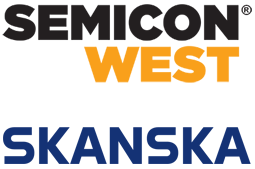
|
Specialist construction expertise for the semiconductor sector
Ahead of SEMICON West 2025, Katie Coulson, EVP & General Manager, Skanska Advanced Technology (SAT), talks about how Skanska approaches some of the most demanding construction projects in the semiconductor industry, thanks to its new specialized operating unit - Skanska Advanced Technology (SAT). |

|
sureCore launches suite of silicon services
Paul Wells, CEO at sureCore, discusses the company’s launch of a comprehensive suite of silicon services, to help customers developing cutting-edge applications address complex design requirements. Leveraging its extensive experience in low-power and low-voltage design, the sureCore team can provide expert engineering support across every facet of SoC and IP design and characterisation. The sureCore silicon services cover four key areas: Analogue/Mixed Signal Design Service Full Custom Transistor-Level Layout Service Mixed-Signal Verification and Characterisation Service and Test Chip Development and Evaluation Service. |

|
Nitrogen bubbling technology solved poor wet etching uniformity and by-product regrowth
Jim Straus, Vice President of Sales and Leo Archer, Program Director, Technical, both at ACM Research, discuss the recently announced major upgrades to the company’s Ultra C wb cleaning tool, including a patent-pending nitrogen bubbling technology to provide significant wet etching uniformity improvement and enhanced cleaning performance. The technology holds significant application potential in the wet etching process for manufacturing 3D DRAM, 3D logic and 500 layer 3D NAND devices. |

|
SEMI Foundation acts as Coordinating Hub for major US microelectronics initiative
Shari Liss, Vice President, Global Workforce Development and Initiatives, SEMI and SEMI Foundation, discusses the National Network for Microelectronics Education (NNME), a nationwide initiative funded by the U.S. National Science Foundation and supported by the U.S. Department of Commerce that aims to advance education, training, and employment pathways in the U.S. microelectronics sector. Shari shares her excitement as the SEMI Foundation is serving as the NNME’s Coordinating Hub, which includes development, coordination, and scaling of Regional Node activities nationwide. |

|
AI enables co-optimisation of devices and materials
Vijay Narasimhan, Director of R&D Collaboration, EMD Electronics, the North American electronics business of Merck KGaA, discusses how AI for materials discovery and intelligence is helping the company to push the boundaries to revolutionize materials discovery by identifying new materials and optimising materials intelligence for greater efficiencies. Scientists and engineers are using the most advanced digital tools - AI, ML and more - coupled with sophisticated capabilities, such as Intermolecular’s combinatorial tools and test vehicles, that allows companies in the semiconductor ecosystem to test, validate, innovate and accelerate the enablement of AI and machine learning capabilities. |

|
Removing the barriers to innovation
Lex Keen, CEO of SecureFoundry, explains why and how the company has completed its expansion of manufacturing capabilities and reverse-engineering services designed to address gaps in the US’s microelectronics supply chain at a time when both emerging technologies and legacy systems face increasing barriers to fabrication. SecureFoundry fills a vital gap with low- and mixed-volume manufacturing solutions that support innovation, defence readiness, and advanced research and is also poised to help customers when it comes to developing AI solutions. |

|
Scaling 3D chips with molybdenum-based metallisation
Kaihan Ashtiani, Corporate Vice President and General Manager of ALD/CVD metals Product Group at Lam Research, discusses the reasons behind the chip industry’s new focus on Molybdenum, explains why this metal is critical to the future of computing, the three main challenges when it comes to current Atomic Deposition layer (ALD) methods and how the company has stepped in to develop the ALTUS Halo molybdenum deposition tool, which overcomes these obstacles and helps to underpin the metal’s benefits in the era of smaller, faster and more sophisticated 3D chips. |

|
Funding strategies in a post-CHIPS Act 1.0 world
VJ Sahi, Partner and Senior Vice President at Clark Street Associates, discusses how the Trump Administration is doubling down on onshoring, reshoring, and funding critical microelectronics to secure America’s edge (and to surpass China in technological and military dominance), but tapping into that funding takes strategy, speed and savvy engagement. |

|
CDimension: Pursuing opportunities to advance the capabilities of silicon CMOS with 2D materials
Jiadi Zhu, CEO & Co-Founder of MIT start-up CDimension, discusses the opportunity for molybdenum disulfide to advance the capabilities of silicon CMOS technologies. |

|
EU Project ELENA positions Europe as a global leader in photonic chip manufacturing
Hamed Sattari, ELENA’s project coordinator and CEO of CCRAFT, explains the outcomes from the recently concluded 42-month EU project, ELENA, sharing his excitement as to the development of the first-ever, European-made lithium niobate on insulator (LNOI) substrates for photonic integrated circuits (PICs) - a breakthrough that establishes a fully European supply chain for thin-film lithium niobate (TFLN) technology. |

|
Showcasing Singapore's semiconductor ambitions on the global stage
Terence Gan, executive director of A*STAR Institute of Microelectronics (A*STAR IME), outlines the success of the organisation’s inaugural ‘Innovate Together’ event, which took place during SEMICON Southeast Asia 2025. New initiatives and global partnerships were unveiled, alongside a strong educational programme, all designed to strengthen Singapore’s semiconductor capabilities. The world’s first industry-grade 200mm Silicon Carbide Open R&D Line was launched to accelerate innovation and collaboration for Silicon Carbide devices Phase 2 of the Lab-in-Fab initiative was unveiled - powering sustainable, efficient and high-performance innovations and high-value manufacturing in piezoelectric MEMS technology in Singapore and the EDA Garage was also launched - to equip local companies with cost effective advanced design tools, strengthening Singapore’s Integrated Circuit design ecosystem. |

|
Enabling high performance deep learning applications on edge devices
Avi Baum, CTO at Hailo, discusses why AI infrastructure needs are already shifting from centralized to edge, how telcos can evolve and future-proof their business to keep up with that transition, and what’s driving demand for AI at the network edge. Avi also talks through the company’s technology portfolio, including the Hailo-10H, its second-generation AI accelerator featuring powerful generative AI capabilities. |

|
New 3D chips could make electronics faster and more energy-efficient
Pradyot Yadav, an MIT graduate student and lead author of a paper on this breakthrough, explains how researchers from MIT and elsewhere have developed a new fabrication process that integrates high-performance GaN transistors onto standard silicon CMOS chips in a way that is low-cost and scalable, and compatible with existing semiconductor foundries. |

|
Responsiveness as a competitive edge
Peter Dijkstra, Chief Commercial Officer at Trymax Semiconductor Equipment, discusses the landmark installation of the company’s 500th process chamber in Asia, marking strong progress toward the goal of 1,000 global installations by the end of 2025. When it comes to plasma- and UV-based solutions for semiconductor manufacturing, where uptime, productivity, and reliability are critical, Trymax has earned a reputation for being highly responsive - from the inquiry stage to post-installation support. Peter also shares his excitement for the company’s future following significant investment from Accuron Technologies. |

|
Fully-integrated, single-chip microwave photonics system for compact and versatile signal processing
Wim Bogaerts, Professor in Silicon Photonics at Ghent University-IMEC, Founder of Luceda Photonics, explains how the Photonics Research Group and IDlab, two imec research groups at Ghent University, and imec have published the demonstration of a fully-integrated single-chip microwave photonics system, combining optical and microwave signal processing on a single silicon chip. The chip integrates high-speed modulators, optical filters, photodetectors, as well as transfer-printed lasers, making it a compact, self-contained and programmable solution for high-frequency signal processing. |

|
Collaboration, the thinking factory and digital transformation
Francisco Almada Lobo, Chief Executive Officer and Co-founder and Jeff Winter, Vice President, Business Strategy, both at Critical Manufacturing, provide some great insights as to the themes covered at the company's recent MES and Industry 4.0 International Summit - with AI front and centre, alongside the introduction of the 'thinking factory' concept, software-defined manufacturing, the importance of unified data strategies and modern architectures and perhaps the key message: collaboration is key when it comes to digital transformation. |

|
Securing critical water resources in the digital age
Prakash Govindan, Gradiant’s co-founder and COO, discusses the challenges facing both the data centre and semiconductor industries when it comes to water usage. The company is currently working with two data centres in the US and the Indo-Pacific to provide sustainable water solutions and has also recently won the contract to build an ultrapure water (UPW) facility for a European semiconductor fab. |

|
Building better business resiliency
Guido D’hert, Global Semiconductor Industry Lead for Accenture, shares his thoughts as to what steps companies can take to make their businesses more resilient, as the semiconductor industry navigates its way through a period of great uncertainty. Guido provides valuable insights into building business resiliency in the face of constant change and the ever-shifting tariff landscape. |

|
Kiterocket to support SEMI’s global communications strategy
Amy Smith, Managing Director of the Technology Practice at Kiterocket, explains how the PR-forward communications agency been named agency of record by SEMI. The partnership leverages the company’s extensive experience and expertise in the global semiconductor industry and marketing communications and will support the association's integrated corporate communications strategy across global markets, emphasizing its impact in advocacy on public policy, workforce development, and multiple, critical technology-focused initiatives. |
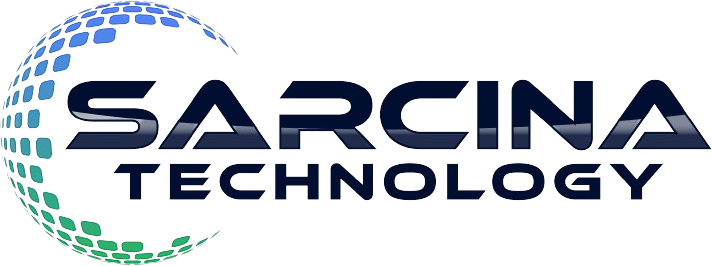
|
High-power, high-performance semiconductor packaging design expertise
Dr Larry Zu, CEO of Sarcina Technology, a global semiconductor packaging specialist, discusses the launch of the company’s AI platform to enable advanced AI packaging solutions that can be tailored to meet specific customer requirements. Leveraging ASE’s FOCoS-CL (Fan-Out Chip-on-Substrate-Chip Last) assembly technology, this platform includes an interposer which supports chiplets using UCIe-A for die-to-die interconnects, allowing for the delivery of cost-effective, customizable and cutting-edge solutions. He also covers advances in Sarcina’s photonic package design capabilities for Co-Packaged Optics (CPO). |

|
Eumetrys measures up to industry challenges
Yannick Bedin, CEO of Eumetrys, discusses the company’s metrology expertise, looking at the ways in which it is helping its customers to address the key challenges and opportunities they face within the semiconductor industry – with advanced packaging, compound semiconductors and the need for faster and more accurate solutions some of the main drivers. |

|
Precision motion control - making a difference
Richard Teo, Aerotech's Director of Asia Pacific, explains how precision motion control is so critical for the semiconductor sector when it comes to applications such as wafer inspection, metrology and advanced packaging and shares details of the company’s motion control innovations which help to address these challenges. |

|
Innovation Days promise essential semiconductor technology insights
Michael Tchagaspanian, EVP Technology Strategic Partnership, CEA-Leti, discusses the forthcoming CEA-Leti Innovation Days 2025, covering the development of the agenda and the anticipated size of the event, before going into more detail on some of the key themes. There is a major focus on AI, with coverage in the plenary session, as well as in two dedicated AI conferences – looking at AI’s impact on HPC, hardware and data centres – and AI also comes into the precision sensors and silicon photonics sessions. Sustainable ICs, power and radiofrequency and the FAMES Pilot Line are further topics being covered during the three day event, where some 130 speakers will be providing valuable insights into the technologies and trends driving the semiconductor sector into the future. |

|
AI's impact on the IT value chain - from chips to gigawatt factories
Jean-Philippe Bourgoin, Deputy Executive Director of the Technological Research Division, CEA & Director of Component and Digital Infrastructure French Program Agency and Michael Tchagaspanian, EVP Technology Strategic Partnership, CEA-Leti, discuss the main focus of the forthcoming CEA-Leti Innovation Days 2025 - AI - with conferences focusing on AI Microelectronics: Shaping the Future of HPC and Data Centres and Hardware at the Heart of AI: Towards Revolutionary Architectures. From the French Minister of Higher Education and Research and the Director General of DG Connect onwards, there is a stellar line of speakers providing valuable insights into the challenges and opportunities of AI as it impacts the entire IT value chain - from semiconductors to servers to the gigawatt factories of the future. |

|
Moving and processing data light
Eleonore Hardy, Silicon Photonics Partnership Manager, CEA-Leti, discusses the silicon photonics conference as part of the AI focus of the forthcoming CEA-Leti Innovation Days 2025. A great line-up of speakers will cover the latest advances, key challenges, and main technologies in photonics and explore potential applications in computing. |

|
Transforming semiconductor analysis
Trevan Landin, Senior Manager Product Marketing at Thermo Fisher Scientific, explains how the continuing evolution of advanced packaging technologies creates certain metrology challenges, for example, in terms of failure analysis, as defects are shrinking in size, are of different types and perhaps intermittent in nature. A new approach is required for failure analysis, such as Design for Test, Diagnostics and Debug (DFTDD), alongside new failure analysis test solutions. Trevan also talks us through the company’s recently launched Thermo Scientific Vulcan Automated Lab, providing a step change in atomic-scale data acquisition by integrating robotic handling with AI-enhanced instruments for semiconductor analysis. |

|
Creating a thriving chemical and materials supply chain
Guttorm Aase, Partner at McKinsey & Company, explains that, while businesses continue to pour money and resources into their semiconductor efforts, the often overlooked chemicals and materials supply chain presents some of the starkest challenges for the US. A recent McKinsey report seeks to understand the challenges and opportunities facing US semiconductor manufacturers as they seek to ensure that they have the chemical and material inputs they need. The content makes for fascinating and insightful reading, and not just for the US industry, with much of the content equally relevant to other countries and regions as they also seek to improve the resilience of their semiconductor supply chains. |

|
Reversible computing and near zero-energy silicon chips
Mike Frank, Senior Scientist and Rodolfo Rosini, CEO, both at Vaire Computing, explain how reversible computing, as an alternative to classic computing, performs calculations without destroying information in the process (i.e., generating heat), reducing energy consumption and the need for cooling. Both are excited by the potential of the technology to meet AI’s ever-increasing computing and energy demands. |

|
The keys for sustainable ICs
Laurent Pain, Sustainable Electronics Program Director at CEA-Leti, discusses one of the main tracks of the forthcoming CEA-Leti Innovation Days 2025, with the presentations set to cover key sustainability topics such as resources, the circular economy, sustainability at the fab level, reuse, AI for buildings, an holistic approach to reducing environmental impacts, as well as key CEA-Leti content on both the FAMES and Genesis projects. |

|
Making light work of AI
Mark Rushworth, Founder and CEO of Finchetto, outlines the company’s mission to significantly reduce data centre energy use and accelerate cluster performance with the world’s first fully-optical passive network switch. Compared to today's state-of-the-art switches, Finchetto reduces power requirement by up to 26x while reducing latency by up 40x. |

|
Atom-thin semiconductors to tackle AI's surging energy costs
Sir Colin Humphreys, Professor of Materials Science at Queen Mary University of London, explains that a team of UK scientists at Queen Mary University of London, University of Nottingham and University of Glasgow has received a £6 million EPSRC programme grant, “Enabling Net Zero and the AI Revolution with Ultra-Low Energy 2D Materials and Devices (NEED2D),” to develop energy efficient, atomically-thin semiconductors to dramatically reduce the electricity demand from AI data centres and high-performance computing. |
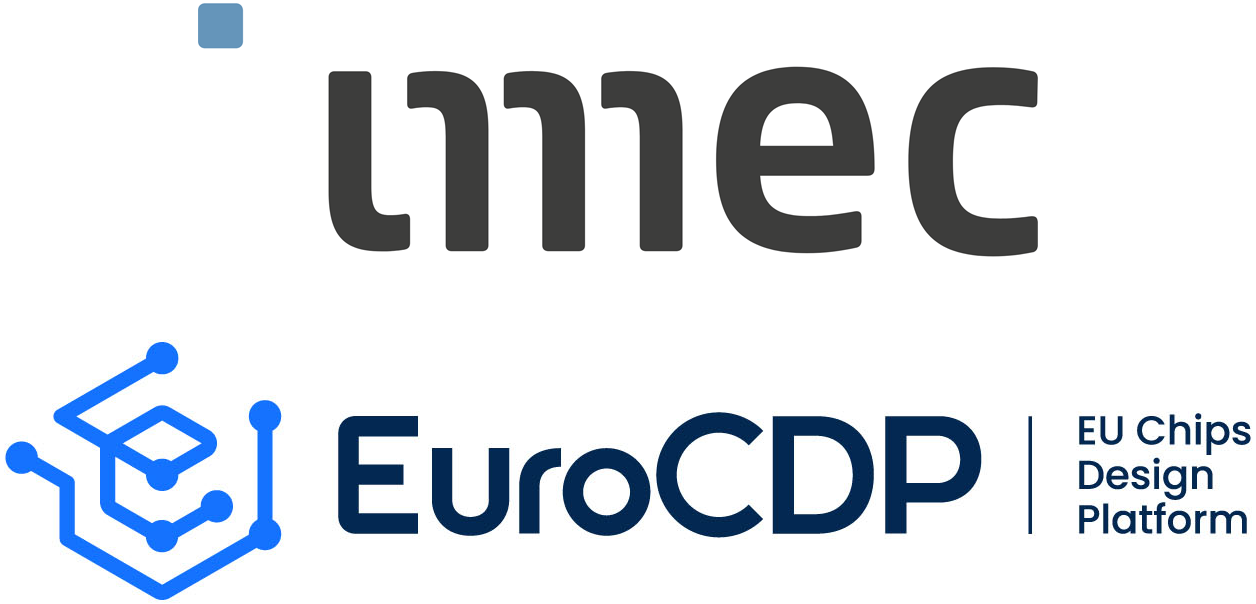
|
Imec coordinates EU Chips Design Platform
Romano Hoofman, imec project coordinator, explains how a consortium of 12 European partners, coordinated by imec, has been selected in the framework of the European Chips Act to develop the EU Chips Design Platform. Funded by Chips JU, the platform will facilitate access to advanced semiconductor design infrastructure, training, and capital for fabless semiconductor startups, small and medium enterprises and research organizations. By providing the necessary resources, the initiative aims to democratize and foster semiconductor innovation across Europe, specifically for chip design. |

|
FTD solutions partners with CEA-Leti to improve water infrastructure management
Slava Libman, CEO and co-founder of FTD solutions, explains how CEA-Leti has partnered with FTD solutions to evaluate and enhance semiconductor manufacturing water management strategies to meet sustainability goals, with the ultimate aim of helping to shape best practices and drive industry-wide adoption of sustainable solutions. Slava shares some brilliant insights as to sustainable water management within the sector, with a particular focus on the need for water infrastructure circularity. |

|
Delivering a breakthrough in space imaging sensing
Frederic Devriere, Business Marketing Manager, Teledyne e2v, explains how a consortium funded by the European Union (EU) is developing advanced high-resolution image sensing technology that could be used in a variety of space missions, including Earth observation, planetary exploration, and scientific research. The three-year Technology for European iNdependence in Space Image Sensor (TENSIS) project will address the EU-based development of advanced CMOS imaging sensors. The project will aim to create a strategic, competitive advantage for European prime and equipment manufacturers and reduce the dependence on critical technologies and capabilities from outside the EU. |

|
Realising the promise of PICs
Chris Maloney, Managing Director of US Operations & Director of Business Development at VPIphotonics, discusses how photonic integrated circuits (PICs) have become an enabling technology in the rapid expansion of data centre connectivity due to their lower cost, lower power consumption, small footprint, and high-speed performance. One of the main challenges of using PICs for data applications is the design complexity associated with their integration into a fiber-optic communication system. Chris explains why the photonic design process is so critical, as well as offering advice to those seeking to develop PIC-based solutions for the dynamic data centre market. |

|
Wafer handling solutions evolve for new materials and applications
Stefan Detterbeck, Director of Sales & Marketing, mechatronic systemtechnik, discusses the company’s recent attendance at SEMICON China, going on to explain the increasing importance of ultra-thin and fragile wafer handling solutions, especially for power electronics and compound semiconductors. |

|
Partnership drives supplier resilience and agility
Talal Abu-Issa, CEO and Co-Founder of Beebolt, explains how Beebolt, the AI-led collaboration platform for global trade, is partnering with SEMI to help revolutionise supplier operations in the semiconductor industry. Together, Beebolt and SEMI will share critical insights and resources with SEMI’s over 3,000 member companies via the SEMI Supply Chain Management (SCM) initiative, helping reinforce supplier capabilities for a more robust supply chain. |

|
CHIPDIPLO project seeks to strengthen European semiconductor industry
Mathieu Duchâtel, Director of international studies at Institut Montaigne and Project Director of the recently launched Chips Diplomacy Support Initiative (CHIPDIPLO), shares his expert insights on the geopolitics of the global semiconductor industry, with particular reference to how the EU, in getting ready to work on a new CHIPS Act, needs to base its industrial policy measures on a reliable understanding of the various risks facing the sector. Mathieu explains the role that the CHIPDIPLO project will play in ensuring a more cohesive and collaborative approach for Europe’s semiconductor ecosystem, vital to strengthen its resilience and competitiveness. |

|
Crescendo increases power density possibilities
Eric Pittana, Senior Director of Global Marketing and EMEA Sales for Empower Semiconductor, discusses the forthcoming OCP EMEA Summit, which serves as a platform where global technical leaders tackle the issues related to data centre sustainability, energy efficiency and heat reuse in the region, offering valuable insights as to how the sector is responding to both the need for more compute power and sustainability objectives. Eric also explains that Empower will be showing the latest advancements to its Crescendo vertical power delivery solution - the platform is now complete, so at OCP EMEA the company will show the full chipset and provide demos of a) thermal performance and b) transient response. |

|
Closing the refurbishment gap and moving toward a more circular, responsible supply chain
Kenneth Lee Wee Ching, CEO of Global TechSolutions (GTS), explains how, as part of its whole suite of semiconductor solutions, the company has built a core operation around refurbishing and repairing high-value semiconductor equipment, restoring performance while extending the lifespan of critical tools, and how refurbishment goes far beyond reuse — it cuts emissions, reduces raw material dependency, and avoids the energy-intensive process of manufacturing and shipping new parts, and all this without compromising on operational uptime. |

|
SiConic enables a scalable ecosystem for automated silicon validation
Klaus-Dieter Hilliges, Platform Extension Manager at Advantest, discusses the company’s recently launched SiConic platform for automated silicon validation. With design verification and silicon validation teams under pressure to reduce time to market and time to quality at the same time as more devices with more intricate features are being developed, the SiConic ecosystem enables the reuse of the wealth of verification content developed in pre-silicon to provide an efficiency and quality breakthrough. SiConic’s ecosystem – including EDA partners such as Cadence, Siemens and Synopsys – overcomes this barrier to reuse, enabling engineering efficiency and accelerated test execution on real silicon. |

|
AI data crucial to shaping an agile, robust supply chain strategy
Ankur Gupta, Senior Director of Product Management for Model N High Tech products, discusses why supply chain disruptions and uncertainties are the top factors impacting revenue management strategy this year within the semiconductor sector. He explains how manufacturers must maintain control and agility to navigate this volatile landscape, with the focus being on prioritising supply chain transparency, reimagining contract structures, developing contingency-based pricing models and, above all, ensuring access to high quality data (and the subsequent analytics) to help shape a successful supply chain strategy. |

|
Terecircuits shares material science innovations for advanced packaging applications
Wayne Rickard, Terecircuits CEO, outlines the company’s decision to join the US’s National Semiconductor Technology Center, contributing its considerable expertise in the synthesis, characterization and delivery of polymers, encapsulants and thin film coatings for advanced packaging. Wayne explains that, in working alongside industry leaders across the U.S. semiconductor ecosystem, Terecircuits can accelerate the development of advanced material solutions for heterogeneous integration and, in so doing, is helping to tackle critical challenges in high-density, high-performance chip manufacturing. |
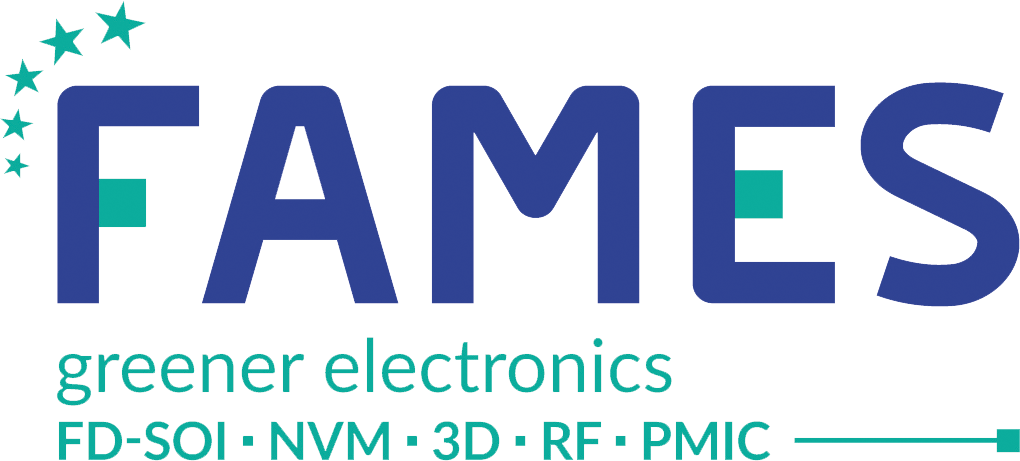
|
FAMES Pilot Line launches Open-Access Call for chip industry
Dominique Noguet, FAMES Pilot Line Project Coordinator, CEA-Leti AND Susana Bonnetier, FAMES Pilot Line Open Access Chairperson, CEA-Leti, provide an update on the FAMES Pilot Line, with the launch of its first Open-Access Call at a dedicated workshop in Brussels, where many potential users participated to learn more about how to submit a User Request to access the pilot line’s cutting-edge microelectronics R&D technologies and services. Users of the pilot line will have access to: two types of PDKs (Pathfinding PDKs for FD-SOI advanced-node performance evaluation and PDKs giving access to silicon, via multi-project wafers (MPW)), specific process steps, modules, integration flows, and demonstrator results, and education and training on FAMES technologies. |

|
NIL and MEMS - a powerful combination
Thomas Achleitner, Business Development Manager at EV Group, gives us a preview of the paper he is presenting at the forthcoming AngelTech event: ‘Leveraging NIL for µLED Lens Packaging’, explaining why NIL is particularly suited for this application, and other process steps that NIL could cover. He also explains about the company’s NIL Photonic Competence Center and talks through the recently launched next-generation version of its GEMINI automated production wafer bonding system for 300-mm wafers. |

|
Revolutionising semiconductor design
Andy Nightingale, Vice President Product Management & Marketing at Arteris, discusses exciting developments at the company: the launch of FlexGen, smart network-on-chip IP accelerating chip design by up to 10x, enhancing engineering efficiency by 3x and with AI-driven heuristics reducing wire length by up to 30% the immediate availability of the latest generation of Magillem Registers technology for SoC integration automation, featuring significant advancements to performance, capacity, standards support, and usability and the news that Nextchip has licensed Arteris’ FlexNoC 5 interconnect IP with Functional Safety for its EFREET1 project for automotive vision. |

|
Investment helps accelerate Wooptix’s product development
Javier Elizalde, Chief Operations Officer at Wooptix, discusses the company’s recent €10 million Series C funding round, which allows it to push the boundaries in resolution quality within the semiconductor technology landscape. Wooptix is launching several semiconductor metrology solutions to global markets, delivering innovative solutions to an international customer base, thanks to its leadership in AI and enhanced connected experiences. |

|
Streamlining electronics system development
Ted Pawela, VP, Head of Customer Success at Renesas, introduces the Renesas 365, Powered by Altium, platform, which promises to revolutionise embedded system development - too often restricted by manual component searches, fragmented documentation and siloed teams. Ted explains how Renesas 365 integrates hardware, software, and lifecycle data into a single digital environment, to streamline workflows, accelerate time to market, ensure digital traceability and real-time insights, and improve decision-making from concept to deployment. |

|
China, geopolitics and the global semiconductor industry
Doug Sparks, CEO of M2N Technologies LLC, a consulting firm specializing in semiconductors, MEMS and sensors, including their supply chains, discusses geopolitics and supply chains, with particular reference to China, AI, sustainability and skills – sharing his considerable knowledge and experience of the global semiconductor industry. Doug has recently published a book on his ‘specialist subject’: ‘A Decade In The Chinese Semiconductor Industry: An American’s Story, which provides insight into the semiconductor and MEMS industry in China – technology, growth, historical background, IP protection strategies, business tips and more. |

|
Holistic approach to hyper-efficient data movement in agile complex silicon systems
Nandan Nayampally, Chief Commercial Officer at Baya Systems, discusses how, to better support AI and other compute-heavy and data-intensive applications, the company offers a holistic approach to design, analyse and build complex, highly performant multi-die systems that overcome traditional semiconductors’ bottlenecks of data movement and scalability. Baya’s performance-focused, software-based approach, coupled with its unique transport and modular fabric IP, is designed from the ground up to produce complex multi-die solutions that are correct by construction with a simplified design process. |

|
SMU optimised for testing emerging nano/2D semiconductor devices
Chuck Cimino, Senior Product Manager for Lake Shore Cryotronics, explains the company’s new test instrument optimised for characterizing nanoscale and other low-power semiconductor devices. The new SMU-10 Source Measure Unit expands the module offering of Lake Shore’s MeasureReady M81-SSM Synchronous Source Measure (SSM) System and enables engineers to easily source and measure signals that would otherwise be swamped by electrical noise. Primary applications include I-V characterization of transistors used in specialized sensors, nanoelectromechanical systems (NEMS), quantum computer readout electronics, and emerging specialized and integrated circuit nanoscale semiconductor-based devices. |

|
Custom cable solution for semiconductor manufacturing sliding components
Jason Davis, New Business Development at Junkosha, discusses the launch of the company’s EPTFE Flat Cable designed for critical components in manufacturing and inspection equipment. The cables suit demanding environments – valued in applications where high-flex cycles, clean manufacturing and long-lasting reliability are required. Junkosha’s tailor-made and highly durable cable features the industry’s narrowest pitch level for semiconductor manufacturing and inspection equipment manufacturers looking to minimize overall cable width to achieve compact, efficient, and streamlined wiring solutions that meet tighter market windows for next generation logic, memory, and specialty markets. |

|
Optimism overrides any causes for concern
Philip Schluter, and Oliver Markl, both Partners at the leading European M&A and Debt Advisory firm, Pava Partners, discuss the state of the semiconductor industry – its size, its geographical and geopolitical strengths and weaknesses across Asia, Europe and North America, some of the key market drivers – the good and the not so good, concluding that there is every reason to be optimistic as to the future. |

|
Advancing semiconductor research thanks to thermal property measurement
Ron Fisher, VP of Sales and Business Development at Laser Thermal, outlines the company’s recent contract win to supply its SSTR-F, steady state thermoreflectance in fiber tool to be installed within the shared metrology laboratory at Louisiana Tech University's Institute for Micromanufacturing (IfM). The tool’s high-throughput, industry-friendly design and non-destructive testing capabilities will support projects ranging from thermal management in electronics to defect detection and the characterization of innovative materials and structures. |
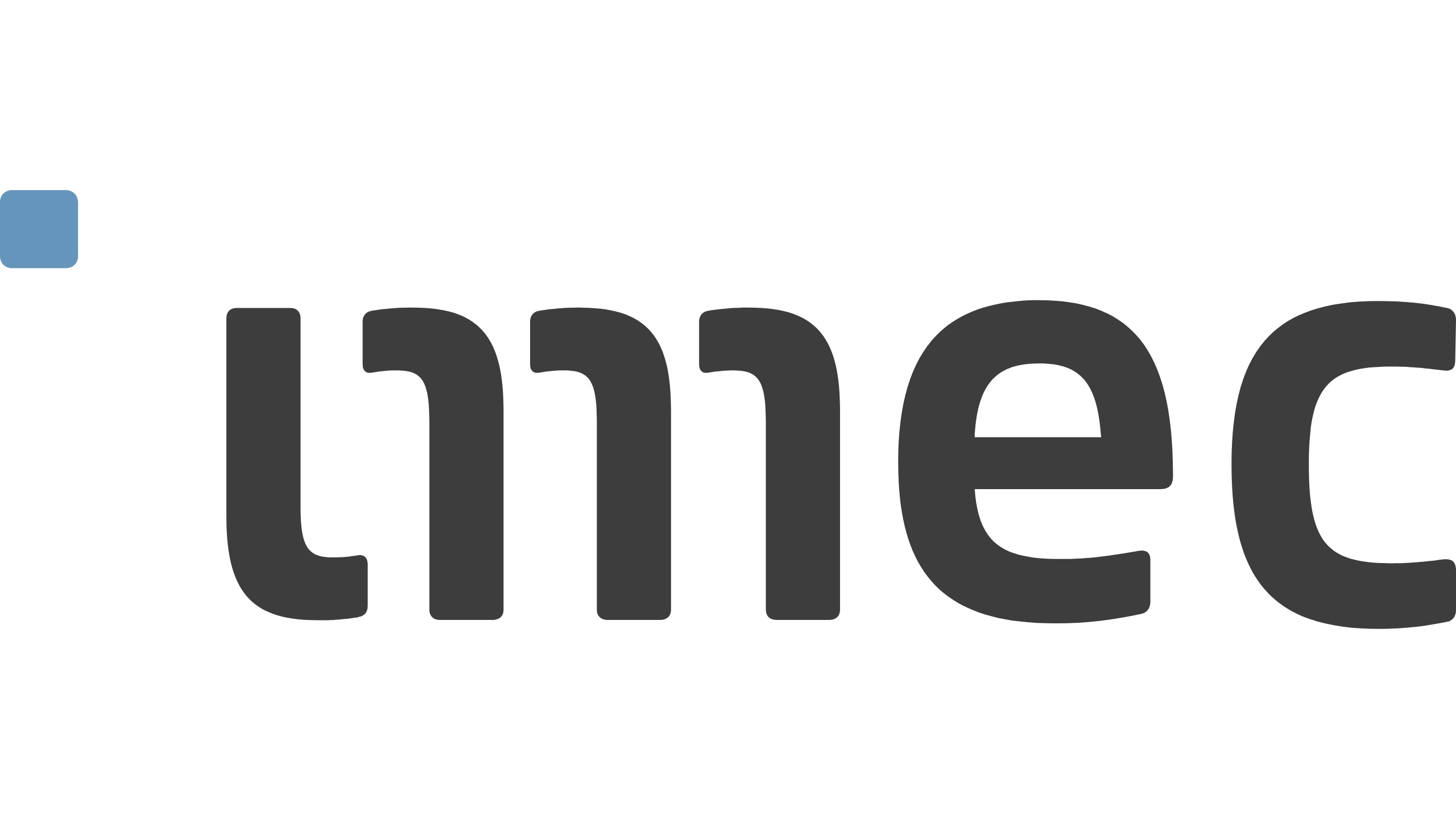
|
Imec demonstrates core building blocks of a scalable, CMOS-fab compatible superconducting digital technology
Anna Herr, scientific director at imec USA Florida, explains how record-performing NbTiN-based interconnects, Josephson junctions, and MIM capacitors open doors to energy-efficient compute systems for AI and HPC. |

|
Control and connectivity solutions for global semiconductor equipment manufacturers
Marc Engel, CEO of Agileo Automation with headquarters in Poitiers, France, talks us through the company’s new E84 PIO Box, a handheld device offering a new lightweight interface for fab staff to test semiconductor equipment software for compliance with SEMI’s E84 and GEM300 standards suite for automatic carrier delivery. It improves the readability, identification, and validation of E84 signal exchanges and functional aspects in cleanrooms or workshops. The E84 PIO Box is designed to rigorously validate nominal and error cases, ensuring seamless operations and fast recovery, benefiting both equipment manufacturers and facilities alike. Agileo is a key contributor to the development and integration of industry standards such as SEMI standards and OPC Unified Architecture (OPC-UA). |

|
Imec proposes double-row CFET for the A7 technology node
Geert Hellings, Program Director DTCO at imec, explains the organisation’s development of a new CFET-based standard cell architecture containing two rows of CFETs with a shared signal routing wall in between. The main benefits of this double-row CFET architecture are process simplification, and significant logic and SRAM cell area reduction according to imec’s design-technology co-optimization (DTCO) study. The new architecture allows standard cell heights to be reduced from 4 to 3.5T, compared to conventional single-row CFETs. |

|
EHD printhead promises semiconductor packaging revolution
Dr. Patrick Heissler, CEO, SCRONA AG, discusses the company’s recently unveiled 128-nozzle electrohydrodynamic (EHD) printhead, which achieves a three-digit nozzle count in digital EHD technology for the first time. Patrick describes how this major milestone offers precision, material flexibility, and scalability for semiconductor advanced packaging – including die-attach applications, dispensing ultra-small adhesive volumes with unparalleled accuracy and high-resolution printing of conductive interconnects, vital for advanced AI chiplets and chip manufacturing innovations. |

|
A modern MES - a must have for the semiconductor sector
Augusto Vilarinho, Head of Global Sales and Business Development at Critical Manufacturing, discussed how Manufacturing Execution Systems (MESs) support semiconductor production improvement, delivering the agility and control required for competitive advantage in today’s rapidly evolving semiconductor landscape. Augusto provides invaluable insights into the ways in which a modern, or digital, MES should provide a flexible, scalable solution for improving intricate manufacturing processes while facilitating the drive towards Industry 4.0, with 5.0 to come! |

|
Innovation opportunities excite JST’s new CTO
Dr. Ismail Kashkoush, JST’s new Chief Technology Officer, shares his thoughts as to the challenges and opportunities of his new job role - overseeing the development and strategy for JST’s engineering teams in driving product advancement, introducing the company’s products and technology globally and maintaining the technology roadmap to support company growth objectives for all surface preparation and technology nodes requirements. |

|
Paving the way for cost-effective mmWave communication and sensing
imec's Siddhartha Sinha, principal member of technical staff, explains how imec has achieved seamless InP Chiplet integration on 300mm RF Silicon Interposer with excellent performance at 140GHz. Using RF silicon interposer technology to combine high-performance III-V chiplets with silicon-based wafer-scale packaging is a significant milestone in developing compact, energy-efficient modules for above 100GHz communication and radar sensing. |

|
Europe’s semiconductor industry focuses on sustainable growth
Laith Altimime, President of SEMI Europe, discusses the challenges and opportunities facing the European semiconductor industry. Laith talks sustainability, collaboration, technology innovation, skills and geopolitics, sharing his excitement for the industry’s future as it underpins the ongoing development of our digital world. |

|
Cementing semiconductor links between the UK and APAC
Stewart Randall, Global Lead for Semiconductors, Intralink’s UK-APAC Tech Growth Programme (TGP), explains how the programme supports UK organisations looking to business development in key semiconductor markets in the APAC region, outlining the help available and also sharing some of the successes to date. intralinkgroup.com/TGP |

|
US presence enhances ongoing success for AP&S
Patrick Hirt, Director Sales & Marketing at AP&S, discusses the company’s experience of SEMICON Europa before outlining the ways in which it is addressing the challenges of key industry issues such as sustainability, skills and the supply chain. Patrick also provides an update on the company’s US office and the application opportunities for which AP&S is well-placed to help its customers, with some new solutions in the pipeline. |

|
Photonic processor promises 30x energy efficiency improvements
Dr. Michael Förtsch, CEO of Q.ANT, discusses the company's first commercial product - a photonics-based Native Processing Unit (NPU) built on the its compute architecture LENA - Light Empowered Native Arithmetics. The Q.ANT NPU executes complex, non-linear mathematics natively using light instead of electrons, promising to deliver at least 30 times greater energy efficiency and significant computational speed improvements over traditional CMOS technology. |

|
DuPont delivers on significant semiconductor materials expansion plan
Drew Chambers, Global Business Director and Anthony Kluth, Integrated Operations Leader, both at Lithography Technologies, Semiconductor Technologies, DuPont Electronics & Industrial, talk through the logistics and benefits of a significant expansion for photoresist manufacturing capacity at the company’s Sasakami site in Japan, going on to share insights as to the EUV lithography challenges and opportunities on which DuPont is currently focused, alongside its work to address substances of concern. Anthony and Drew also share their thoughts on DuPont’s and the wider semiconductor industry’s future, with sustainability, supply chain, skills and the company’s roadmap discussed. |

|
Sagence AI delivers in-memory compute innovations
Richard Terrill, VP Strategy, and Suhas Nayak, Sr. Director, Product Marketing, both at SagenceAI, explain how the company (formerly known as Analog Inference) is introducing the next leap forward for AI inference hardware. Innovations are across three aspects of in-memory compute techniques: analog multi-level flash and subthreshold compute inside flash memory cells, opening the doors for economic viability of language and vision inferencing at scale and delivering three orders of magnitude improvement in lower power consumption plus lower cost at equivalent high performance, compared to leading providers of digital inferencing silicon. |

|
ZEISS launches FIB-SEM optimised for TEM sample preparation
Dr. Thomas Rodgers, head of business sector electronics at ZEISS Microscopy, talks through the company’s new ZEISS Crossbeam 550 Samplefab. Built for efficiency and throughput in the semiconductor lab, ZEISS Crossbeam 550 Samplefab provides recipe-based automation for the routine TEM sample preparation work of bulk milling, lift-out and thinning at any number of target points on the sample. The solution promises an automation yield of >90% for processing lamellae from bulk to TEM grid without operator intervention. |

|
The world’s first silicon photonic chip for FHE
Nick New, CEO of Optalysys, explains how the company enables the future of secure compute by processing encrypted data at scale, without it being decrypted. It does this by using the power of advanced silicon photonics to enable Fully Homomorphic Encryption, a cryptographic technology to allow organisations to securely commercialise their data, providing several significant advantages to traditional electronic semiconductors. |
|
|
The perc(s) of polymer residue removal
Fabio Wörndl, Co-CEO and CMO, Siconnex, explains how the company’s perc™ solution cuts costs by eliminating solvents while achieving 100% polymer removal and also eliminates the need for solvents. perc™ offers flexible solutions for removing residues after dry etching, including metal, oxide, silicon, or VIA etching. Fabio goes on to discuss the semiconductor industry’s journey towards NetZero as well as some of the challenges and opportunities which lie ahead in 2025. |

|
Optimising wafer manufacturing yield with proper thermal control
Margaret Brennan, Principal Engineering Lead, Application Solutions, and Doug Nordstrom, Product Manager, both at Swagelok, discuss the importance of the thermal loop when it comes to improving wafer manufacturing yield. Advanced thermal control techniques are an often overlooked subject, where the specification, installation and ongoing monitoring and maintenance of hoses with proper insulation, for example, can mean the difference between success and failure. |
